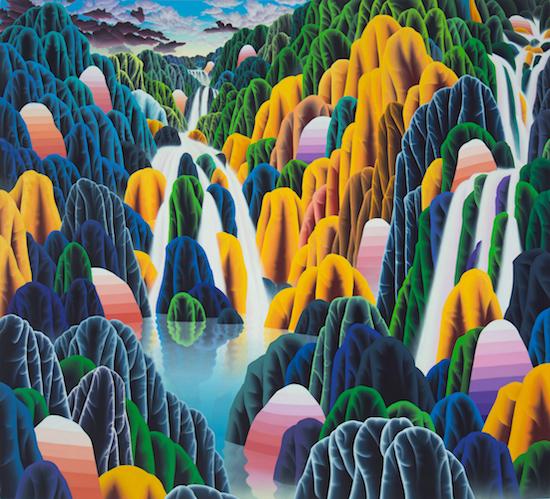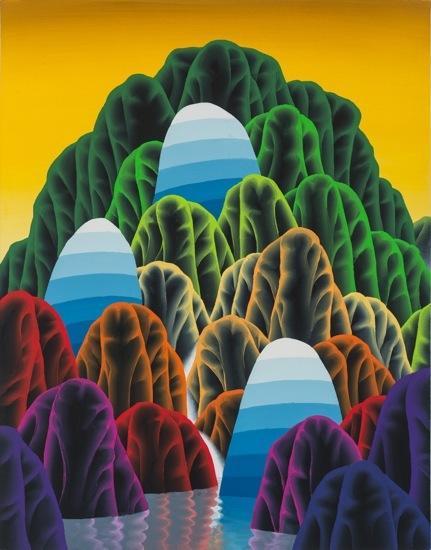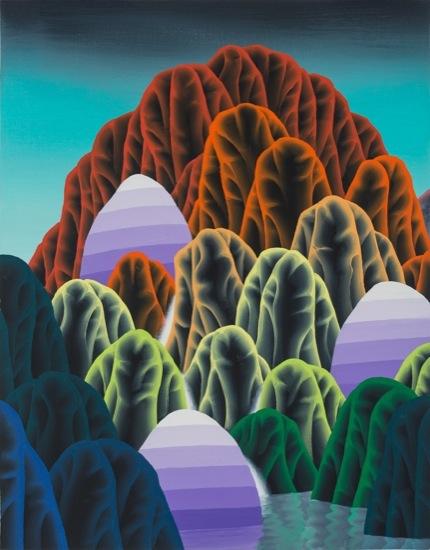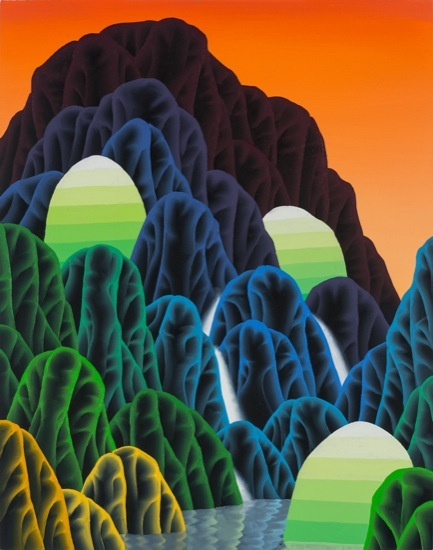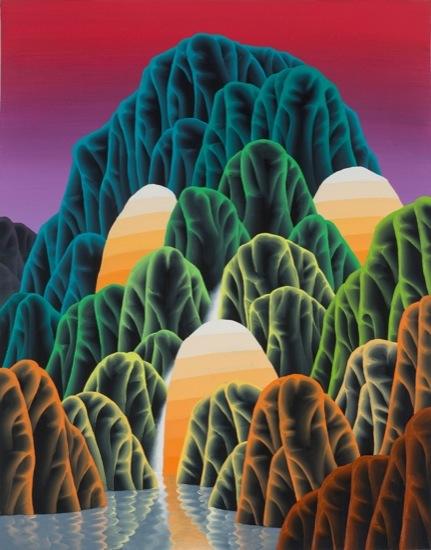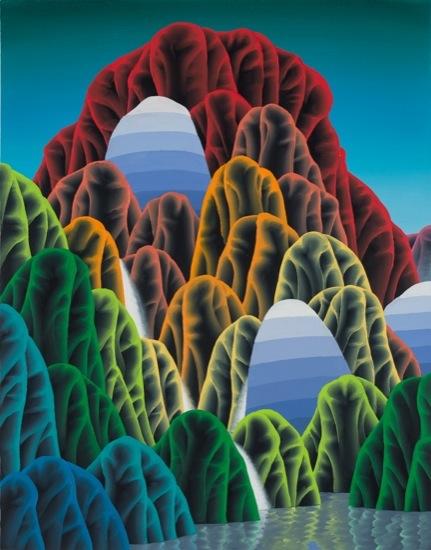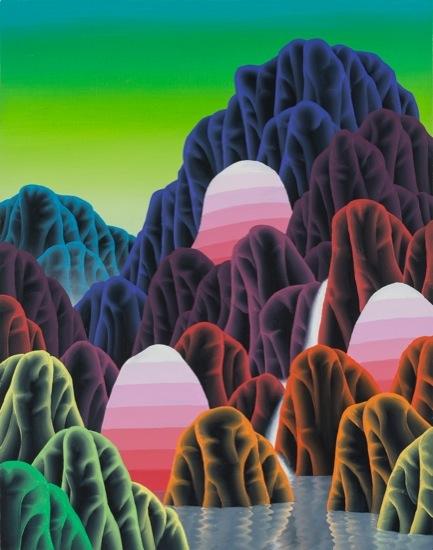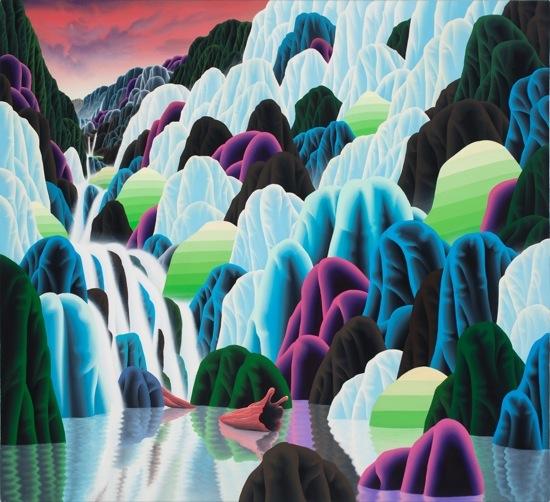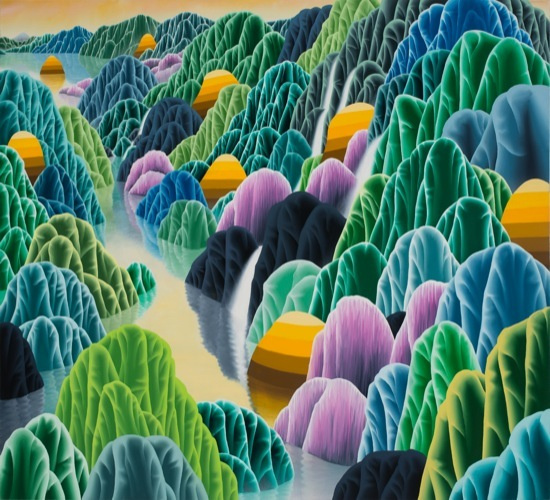In the last six years I have committed to landscape as the subject of my work. Seldom have I used the actual land directly when making these images, and instead rely on an imagined space. This has afforded me numerous influences and ideas to filter through my process. The paintings of Frederic Church and Caspar David Friedrich, the Ukiyo-e prints of Hiroshige and Hokusai, and even the design elements and graphics of video games and fantasy art have all inspired me.
Lately, through the honing of my process, a narrative element has been added to my work. Repetition, habit, and patience combine to evoke a type of journey. This journey is imbued with joy, discovery, frustration, and at times even misery. At the apex of this process, I have a completed painting which is, in a sense, evidence of the journey itself.
The title of the exhibition comes from Voltaire's 18th century novel Candide. In the book, the main character, Candide, finds his sheltered and blindly optimistic world interrupted and replaced by a cascade of ever increasing hardship. The struggles he encounters are increasingly fantastic and ever evolving, and we see our hero's optimism replaced by a more pragmatic world view. By the end, Candide has replaced his blind faith with the mantra: "Let's cultivate our garden."
There is a parallel between Candide's odyssey and my own practice. Although visually there are many optimal and ideal elements, these paintings all come from a real place; this place exists only because I've cultivated it.
